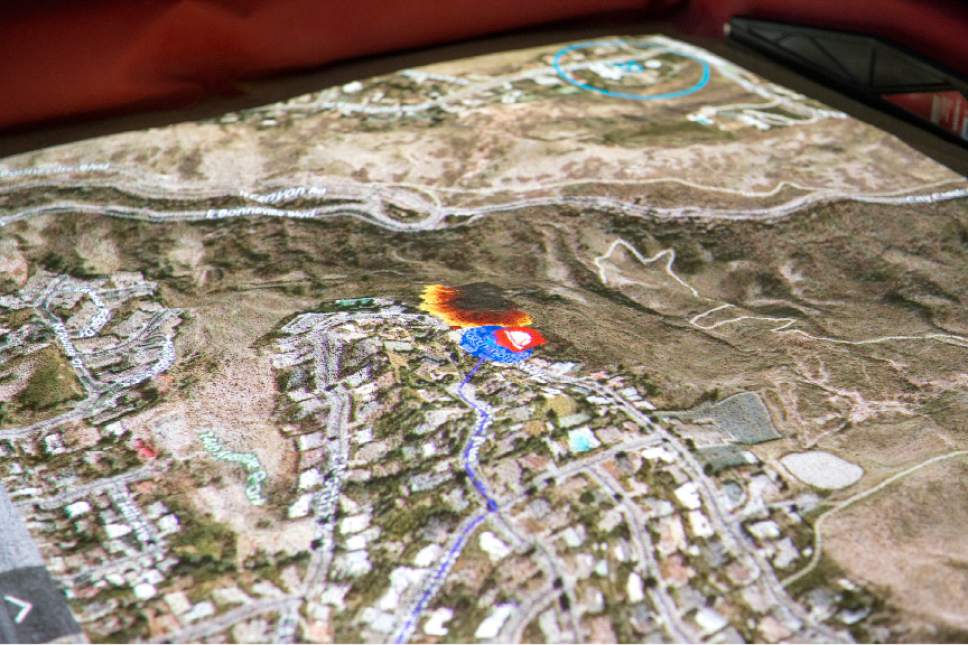This is an archived article that was published on sltrib.com in 2017, and information in the article may be outdated. It is provided only for personal research purposes and may not be reprinted.
As wildfire season approaches, Salt Lake City faces a "giant threat."
That's due in part to Utah's altitude, hot summer weather and dry climate, Dan Cather of the Utah Fire Rescue Academy told a group of about 20 residents at a wildfire simulation Saturday morning.
During the presentation, Cather used a device called a "Simtable" to arrange sand to match the geography of a region. He then projected a satellite photo onto it to show where roads, structures and vegetation lie.
To demonstrate, Cather adjusted various conditions, such as wind speed, and ignited virtual fires to mimic behavior specific to regions in and around Salt Lake City. Many areas — especially those sitting on benches near Emigration and City Creek canyons — are prone to wildfires, Salt Lake City fire Capt. Chad Doyle said.
Typically, fires spread "up and out," making it dangerous for firefighters to approach blazes on slopes from a higher altitude, Cather said. Additionally, embers blowing in the wind can cause fires to skip areas and residences, burning in a less predictable pattern.
In a situation where a wildfire is blazing in a residential area, firefighters have to make quick decisions about which homes they can feasibly save, said Salt Lake City fire Warden Robert Sanders. That's why residents should try to mitigate circumstances around their homes that would make fires more likely, fire officials said.
"If I look at your property and you did nothing around your property to remove those fuels off, that house is gone," Sanders said. "We're going to skip that house and go on to the houses that are defensible and savable."
Mitigation does not mean bulldozing trees, bushes, flowers and grass, Doyle said.
"We're not looking to really impact what your yard looks like," he said. "What we're looking to target is dead and dying sticks," branches, pine needles and leaves in gutters, rooftops and gathering places throughout the property where a fire could easily break out.
Once wildfires break out, fighting them could cost millions after one day of burning, Doyle said.
Until this year, funding to fight Salt Lake City fires came from taxpayers and the fire department budget, but now the city has an agreement with the state that state firefighters will respond to wildfires within city boundaries at no additional cost.
Salt Lake City is putting together a community wildfire protection plan to help make at-risk areas safer, Sanders said, but it requires cooperation from everyone involved. One way residents can do that is by contacting fire officials, who can assess properties and offer pointers on how to mitigate fire conditions, he said.
"Nothing is 100 percent," Cather said. "All we're trying to do is reduce the potential of it moving. If you have the whole community involved, then everyone is on the same page, and everyone is going to benefit from it. But if you have one individual that's like, 'I'm not changing anything,' that individual is a risk to you guys' plan."
Twitter: @mnoblenews







